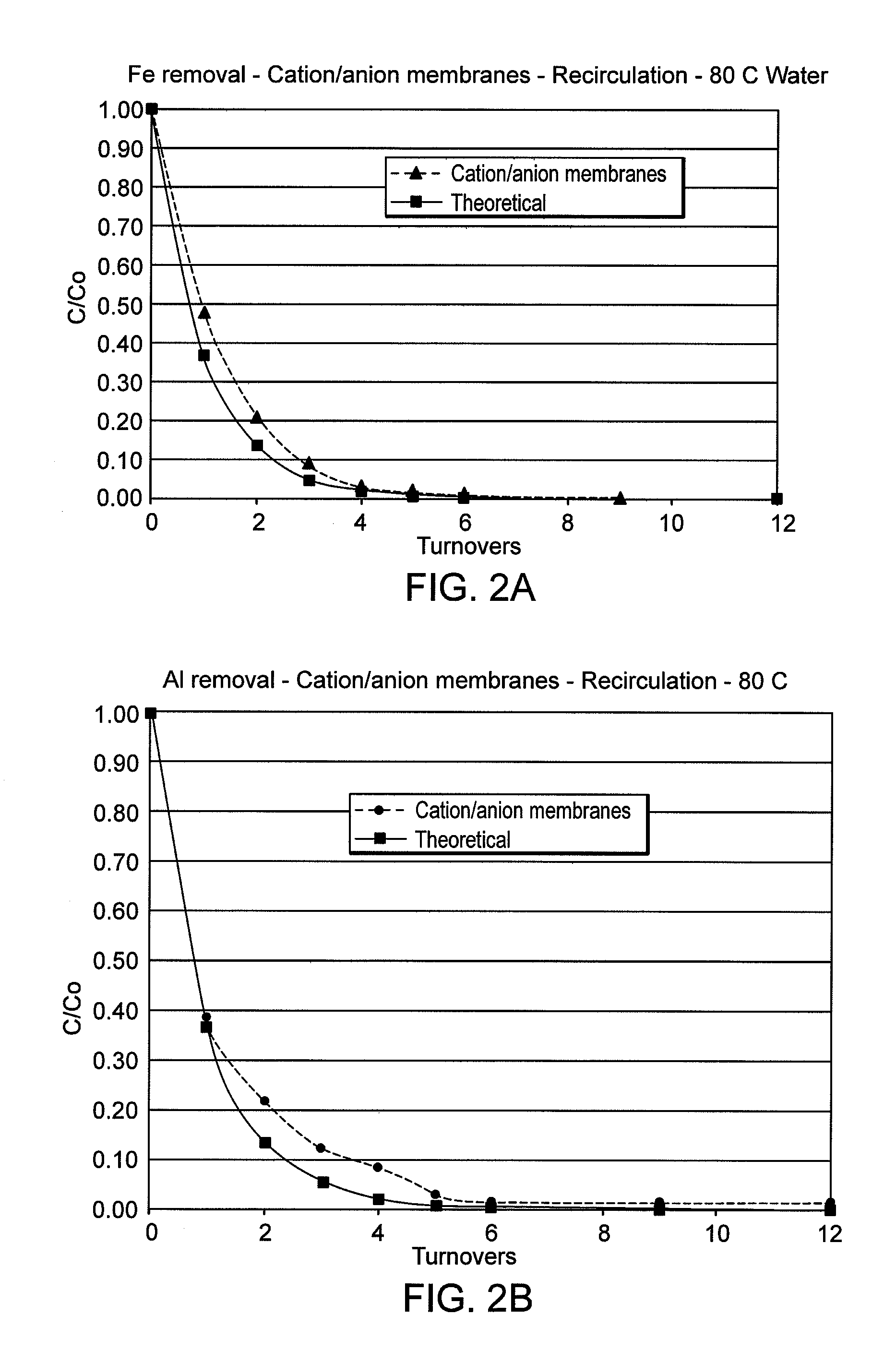Porous membranes containing exchange resins
a technology of exchange resins and porous membranes, which is applied in the direction of membranes, filtration separation, separation processes, etc., can solve the problems of degrading pharmaceutical compositions, affecting the kinetics of the reaction, so as to achieve the effect of reducing the pressure drop, reducing the amount of oxidation, and high fluid flow ra
- Summary
- Abstract
- Description
- Claims
- Application Information
AI Technical Summary
Benefits of technology
Problems solved by technology
Method used
Image
Examples
example 1
[0060]This example illustrates the removal performance of a surface functionalized membrane or a single cation resin containing membrane in hot water.
[0061]FIG. 1 illustrates the rate of removal of Al metal ions (A) and Fe metal ions (B) in a re-circulation bath containing water at 80° C. and spiked with known concentration of selected metal ions. These data are for surface functionalized sulfonic acid modified PE substrate or cation resin filled polyethylene membrane. Both showed limited removal of Fe and Al ions compared to the theoretical curve, suggesting presence of non-removable species such as suspended oxides of Al or Fe.
example 2
[0062]In another experiment, a two-layer configuration containing a cation resin filled UPE membrane of current invention followed by an anion resin filled microporous membrane of current invention was evaluated under the same conditions as in Example 1. The rate and amount of removal of Fe FIG. 2(A) and Al FIG. 2(B) ions are improved, especially after about 4 turnovers, compared to the results of Example 1. Quantitative removal (detection limit) of these ions at nearly the theoretical rate in 80° C. water was observed suggesting the combination of both layers remove the material from the water.
example 3
[0063]In the third experiment, three layers of 47 mm disks membrane were configured as follows: a cation exchange resin filled UPE membrane layer, an anion exchange resin filled membrane layer of current invention, a microporous (cationic) 0.45 micron UPE membrane layer. (Alternatively a 0.05 micron sieving filter could be used.) This configuration of membranes was evaluated at a fluid flow of about 20 ml / min of 80° C. water. A flow through experiment was conducted and the results are shown in FIG. 3(A) and FIG. 3(B). These results could be scaled to a flow of about 3 to about 4 gallons per minute (about 15,200 cm3 min−1) through approximately 10,000 cm2 area for each membrane to provide a similar pressure drop and removal to less than about 10 ppb (v / v), of impurity. The results are shown in FIG. 3(A) for Al and Fe, and in FIG. 3(B) for Ca and Cu. The results indicated removal of metal ions in hot water.
PUM
| Property | Measurement | Unit |
|---|---|---|
| Temperature | aaaaa | aaaaa |
| Fraction | aaaaa | aaaaa |
| Concentration | aaaaa | aaaaa |
Abstract
Description
Claims
Application Information
 Login to View More
Login to View More - R&D
- Intellectual Property
- Life Sciences
- Materials
- Tech Scout
- Unparalleled Data Quality
- Higher Quality Content
- 60% Fewer Hallucinations
Browse by: Latest US Patents, China's latest patents, Technical Efficacy Thesaurus, Application Domain, Technology Topic, Popular Technical Reports.
© 2025 PatSnap. All rights reserved.Legal|Privacy policy|Modern Slavery Act Transparency Statement|Sitemap|About US| Contact US: help@patsnap.com



